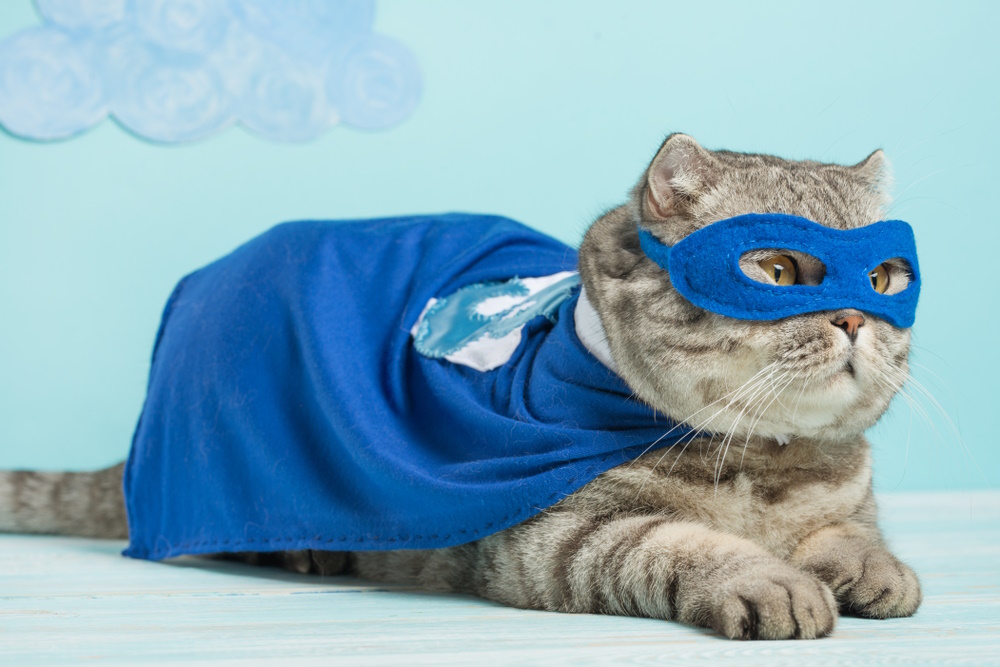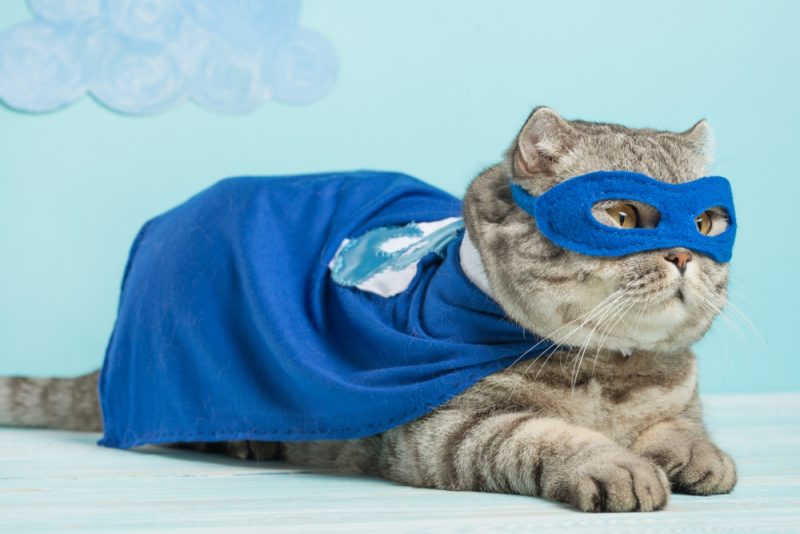Click to Skip Ahead
Cats have lived alongside humans for thousands of years and have always been a subject of interest to artists and creatives. From ancient hieroglyphs to Renaissance paintings, cats have appeared in all kinds of artwork throughout history. More recently, you can find many cartoon cats featured in cartoon strips, comic books, and animations.
There are all kinds of iconic cartoon cats with varying personalities and unique traits. It’s always a fun choice to name your cat after a famous cartoon cat. We’ve prepared a list of amazing cartoon cats that’ll inspire you to come up with the perfect name for your new cat.
How to Name Your Cat
The most important thing to remember while finding a name for your cat is that there’s no rush. You can take your time with this process, and many people will choose to name their cats after they’ve settled into their new home. Cats can take several weeks to months to fully adjust to their new home and start letting their true personality shine.
It’s often helpful to make note of unique quirks, personality traits, and distinctive features that you discover about your cat. You can then compare these qualities to cartoon cats that may look or act similarly to your pet cat. Taking your time will help you to come up with a thoughtful and meaningful name that your cat will be honored to have.
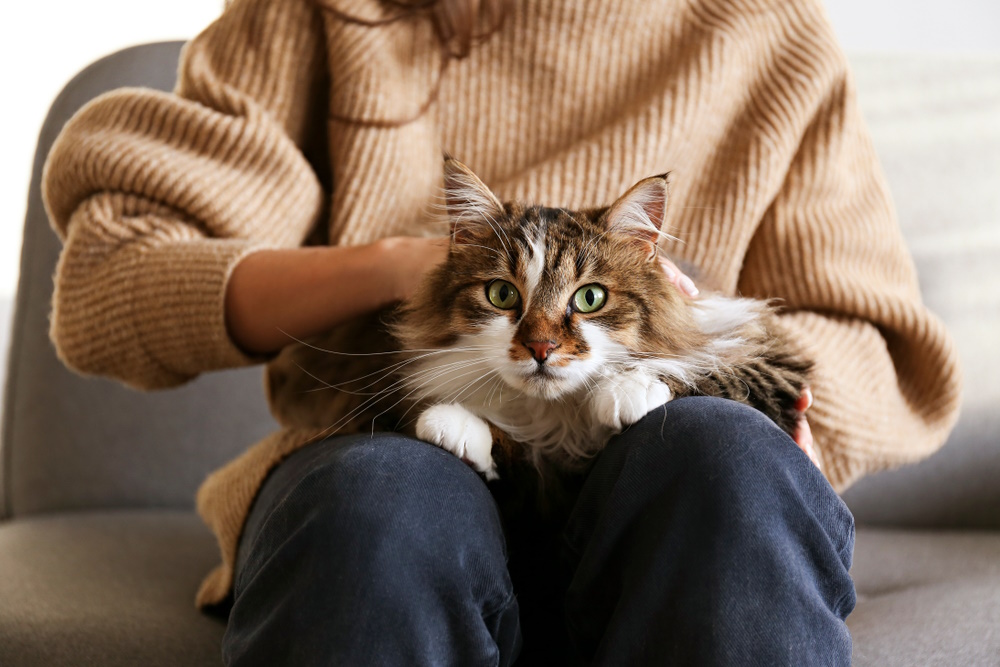
Cats in US Comics
While Garfield will be the first name that comes to mind for many people, there are actually many other noteworthy American cartoon cats. Here are some names of cartoon cats that have either headlined or have been featured in comic book series and comic strips.
- Alley-Kat-Abra (New Teen Titans)
- Arlene (Garfield)
- Atom (Atom the Cat)
- Attila (Mother Goose and Grimm)
- Basil (Basil the Royal Cat)
- Bucky Katt (Get Fuzzy)
- Butch (Pogo)
- Cassandra Cat (Slylock Fox & Comics for Kids)
- Catbert (Dilbert)
- Chewie (Captain Marvel)
- Chubby Hugs (Get Fuzzy)
- Claude (Looney Tunes)
- Cleo (Heathcliff)
- Cybil (Liō)
- Desdemona (Cicero’s Cat)
- Dex-Starr (Green Lantern)
- Edgar (Jack, Jacky, and the Juniors)
- Faron (Peanuts)
- Garfield (Garfield)
- Gilbert (Simon’s Cat)
- Graystripe (The Lost Warrior)
- Heathcliff (Heathcliff)
- Hector (Heathcliff)
- Hershey St. John (Sonic the Hedgehog)
- Hobbes (Calvin and Hobbes)
- Jasper (Sam and Silo)
- Krazy Kat (Krazy Kat)
- Krosp (Girl Genius)
- Ludwig (Arlo and Janis)
- Mingus (The Unwritten)
- Molly Sanders (Achewood)
- Mungo (Heathcliff)
- Nermal (Garfield)
- Paulie (Non Sequitur)
- Peekaboo (Rose is Rose)
- Pickles (Big Nate)
- Preston (The Flibbertys)
- Pusheen (Pusheen)
- Rambo (The Middletons)
- Raymond Quentin Smuckles (Achewood)
- Riff-Raff (Heathcliff)
- Scratch (Overboard)
- Simple J. Malarkey (Pogo)
- Skit (Skit the Cat)
- Solange (9 Chickweed Lane)
- Streaky (Supergirl)
- Superkatt (Giggle Comics)
- Tabby (Moose and Molly)
- Tuffy (Coo Coo Comics)
- Wiley Catt (Pogo)
- Wordsworth (Heathcliff)
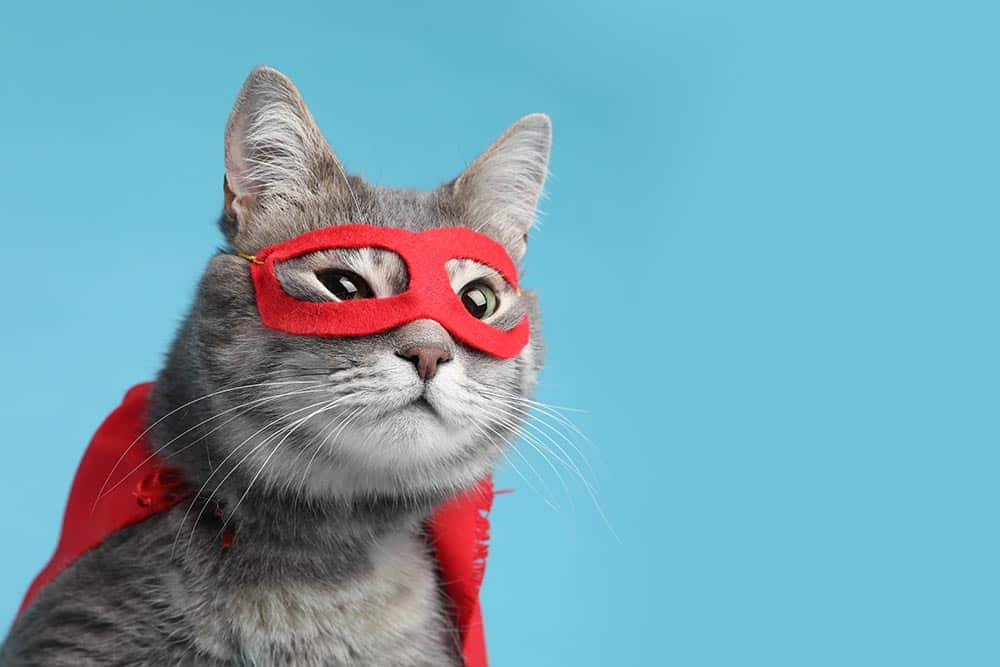
Cats in International Comics
Cats are also a subject of interest in many international comics. Here are some famous cartoon cats that have appeared in comics from all across the world.
- Azrael (The Smurfs)
- Blacksad (Blacksad)
- Biniou ((Phil et) Jordi)
- Billy (Billy the Cat)
- Cal (Boes)
- Carrot (Pepper&Carrot)
- Chaffoux (Tintin)
- Corporal (Boule et Bill)
- Dinky (Rupert Bear)
- Fellini (Macanudo)
- Flossie (Flossie)
- Gaturro (Gaturro)
- Korky (Korky the Cat)
- Le Chat (Le Chat)
- Meebo (Meebo and Zuky)
- Mirliton (Mirliton)
- Pantoufle (Sibylline)
- Ponpon (Schanulleke)
- Poussy (Poussy)
- Scrameustache (Scrameustache)
- Soapy (Neil the Horse)
- Stanislas (Prudence Petitpas)
- Tom Poes (Tom Poes)
- Vanilla (Monica’s Gang)
Japanese Manga Cats
There’s a notable number of cats featured in Japanese manga. Here are just a few examples of memorable manga cats.
- Anise (Magico)
- Aquamarine (Mamotte! Lollipop)
- Artemis (Codename: Sailor V)
- Babu (Sankarea)
- Calico Cat (Takemitsu Zamurai)
- Carla (Fairy Tail)
- Chi (Chi’s Sweet Home)
- Donyatsu (Donyatsu)
- Doraemon (Doraemon)
- Fukumaru (A Man and His Cat)
- Gekkou (Fujimura-kin Mate)
- Gin (The Way of the Househusband)
- Happy (Fairy Tail)
- Haru (My Roommate Is a Cat)
- Kero (Cardcaptor Sakura)
- Kuro (Love Hina)
- Kuroneko-sama (Trigun)
- Kyo Sohma (Fruits Basket)
- Luna (Sailor Moon)
- Maya (Azumanga Daioh)
- Cat (Cat on the Hero’s Lap)
- Nichiya (Fairy Tail)
- Nii (Breakfast with My Two-Tailed Cat)
- Norachiyo (Nekogahara: Stray Cat Samurai)
- Nyanko-sensei (Natsume’s Book of Friends)
- Panther Lily (Fairy Tail)
- Spinel (Cardcaptor Sakura)
- Torata (A Cat from Our World and the Forgotten Witch)
- Touka (Fairy Tail)
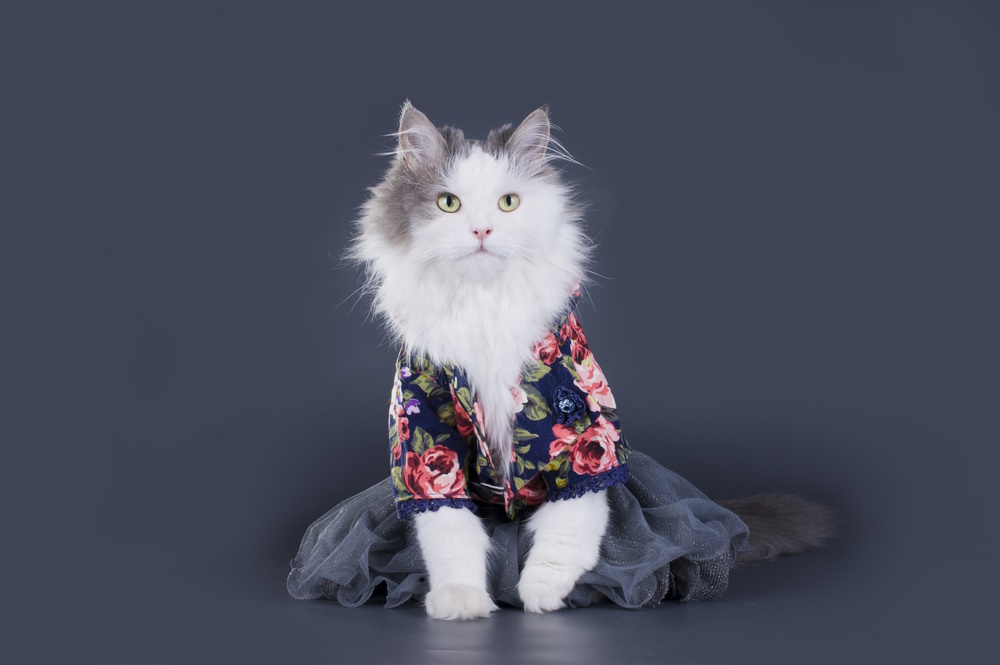
Sanrio Cats
Sanrio is a Japanese entertainment company that has created many iconic cartoon characters. Their most famous character is Hello Kitty, but Hello Kitty isn’t the only adorable cartoon cat that they’ve created. Here are some other cool and cute cats from Sanrio.
- Adorozatorumary
- Black Opal
- Charmy Kitty
- Chococat
- Dear Daniel
- Garnet
- Hello Kitty
- Masyumaro
- Mewkledreamy
- Mimmy White
- Nyanmi
- Shirotaro
Anime Cats
Cats are also popular characters in Japanese anime. The following cats are all famous cats that are loved by their fandoms.
- Arthur (Code Geass)
- Blaire (Soul Eater)
- Delcatty (Pokemon)
- Gib (Mary and the Witch’s Flower)
- Glameow (Pokemon)
- Humbert von Gikkingen (The Cat Returns)
- Jiji (Kiki’s Delivery Service)
- Kamineko (Azumanga Daioh)
- Kirara (Inuyasha)
- Korin (Dragon Ball Z)
- Liepard (Pokemon)
- Lily (Kiki’s Delivery Service)
- Litten (Pokemon)
- Luisa (Whisper of the Heart)
- Luxio (Pokemon)
- Meowth (Pokemon)
- Molly (The Ancient Magus Bride)
- Moon (Whisper of the Heart)
- Muta (The Cat Returns)
- Natori (The Cat Returns)
- Natoru (The Cat Returns)
- Nekobasu (My Neighbor Totoro)
- Niya (The Secret World of Arrietty)
- Persian (Pokemon)
- Potya (Yuri!!! on ICE)
- Prince Lune (The Cat Returns)
- Raku (Bleach)
- Shinx (Pokemon)
- Skitty (Pokemon)
- Solgaleo (Pokemon)
- Thomas (Earwig and the Witch)
- Yuki (The Cat Returns)

TV Show Cats
You can find many cartoon TV shows that feature cats. Here are some of the most famous animated cats that have appeared on TV.
- Benny (Top Cat)
- Brain (Top Cat)
- Candy Kitty (Felix the Cat)
- Choo-Choo (Top Cat)
- Dongwa (Sagwa, the Chinese Siamese Cat)
- Dulcinea (The Adventures of Puss in Boots)
- Fancy-Fancy (Top Cat)
- Felix (Felix the Cat)
- Gumball (The Amazing World of Gumball)
- Hun Hun (Sagwa, the Chinese Siamese Cat)
- Jet Jet (Sagwa, the Chinese Siamese Cat)
- Klondike Kat (Klondike Cat)
- Kitty Kat (Felix the Cat)
- Pink Panther (The Pink Panther)
- Jinks (The Huckleberry Hound Show)
- Kitty (South Park)
- Nastassia Slinky (Felix the Cat)
- Nemo (Arthur)
- Oscar (Felix the Cat)
- Rosco (Felix the Cat)
- Sagwa (Sagwa, the Chinese Siamese Cat)
- Salem (Sabrina, the Teenage Witch)
- Sheba Beboporeba (Felix the Cat)
- Sheegwa (Sagwa, the Chinese Siamese Cat)
- Snagglepuss (Snagglepuss)
- Snowball (The Simpsons)
- Sphinx (The Adventures of Puss in Boots)
- Spook (Top Cat)
- Stimpy (Ren and Stimpy)
- Tom (Tom & Jerry)
- Tony the Tiger (Kellogg’s Frosted Flakes)
- Top Cat (Top Cat)
Looney Tunes Cats
Since releasing its first animated short in 1930, Looney Tunes has accumulated many cartoon cats that are loved by cat fans all throughout the world. Here are some animated cats that belong in the Looney Tunes universe.
- Alex the Cat (Felix the Cat)
- Alan
- Babbit
- Beans
- Catstello
- Clarence Cat
- Claude Cat
- Conrad
- Dodsworth
- Elliot Sampson
- Kitty Bright
- Penelope Pussycat
- Pete Puma
- Rita
- Sam Cat
- Schnooks
- Sylvester
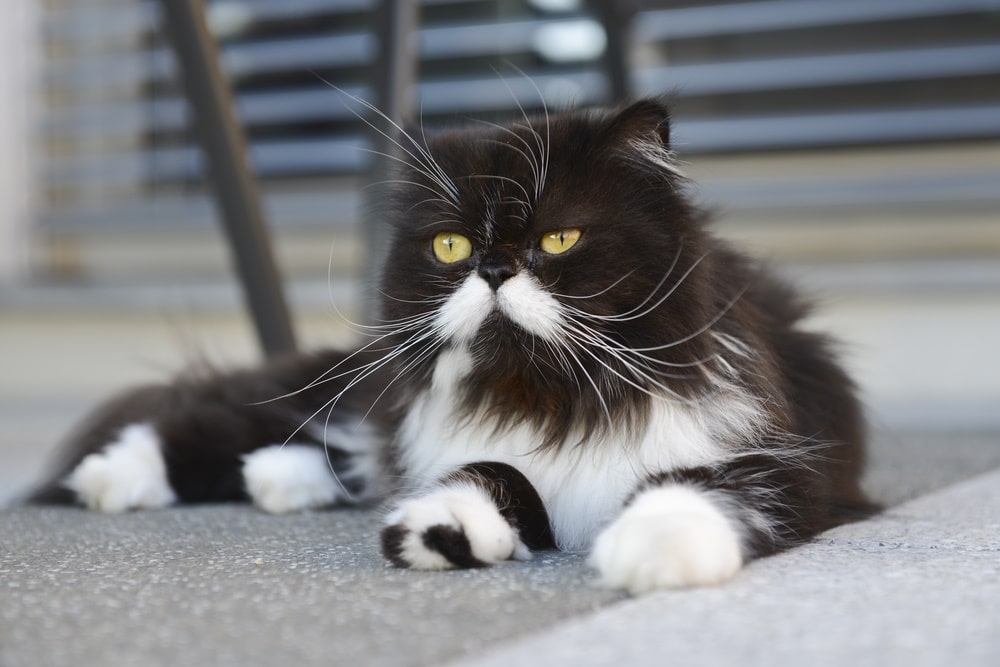
Disney Cats
Disney has also created many notable animated cat characters throughout the years. Here are some of our favorite cartoon cats that have been featured in Disney movies and TV shows.
- Bagheera (The Jungle Book)
- Berlioz (The Aristocats)
- Billy Boss (The Aristocats)
- Cheshire Cat (Alice in Wonderland)
- Duchess (The Aristocats)
- Figaro (Pinocchio)
- Kiara (The Lion King II: Simba’s Pride)
- Kovu (The Lion King II: Simba’s Pride)
- Lucifer (Cinderella)
- Marie (The Aristocats)
- Mittens (Bolt)
- Mochi (Big Hero 6)
- Mufasa (The Lion King)
- Nala (The Lion King)
- Oliver (Oliver & Company)
- Peppo (The Aristocats)
- Rajah (Aladdin)
- Sarabi (The Lion King)
- Scar (The Lion King)
- Sergeant Tibbs (101 Dalmatians)
- Simba (The Lion King)
- Thomas O’Malley (The Aristocats)
- Tigger (Winnie the Pooh)
- Toulouse (The Aristocats)
- Yzma (The Emperor’s New Groove)
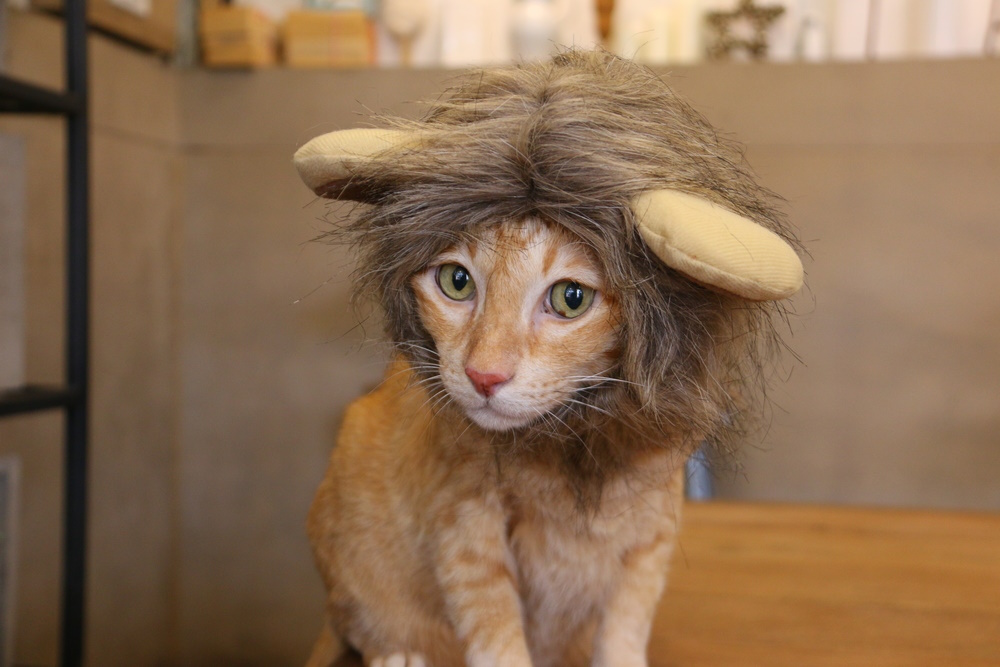
Animated Movie Cats
Many animated movies have a lovable or unforgettable cat character in them. Here are just a few names of cats that have been featured in an animated film.
- Bob (Luck)
- Chloe (The Secret Life of Pets)
- Danny (Cats Don’t Dance)
- Kitty Softpaws (Puss in Boots)
- Maurice (The Amazing Maurice)
- Puss in Boots (Puss in Boots)
- Sawyer (Cats Don’t Dance)
Cats in Picture Books
Picture books are a great source of inspiration for cartoon cat names. The following cat names have been drawn from beloved children’s books.
- Atticus (Atticus Caticus)
- Bert (Rise of Zombert by Kara LaReau)
- Betto (A Cat Story by Ursula Murray Husted)
- Cat in the Hat (The Cat in the Hat by Dr. Seuss)
- Cilla (A Cat Story by Ursula Murray Husted)
- Cookie (Cookie’s Week by Tomie dePaola)
- Crenshaw (Crenshaw by Katherine Applegate)
- Crookshanks (Harry Potter franchise)
- Flubby (Flubby by J.E. Morris)
- Lord Cat (The Cat From Hunger Mountain by Ed Young)
- Max Meow (Max Meow: Cat Crusader by John Gallagher)
- Norris (Harry Potter franchise)
- Muffin (There Are No Bears in This Bakery by Julia Sarcone-Roach)
- Niblet (Niblet & Ralph by Zachariah OHora)
- Otto (Fern and Otto by Stephanie Graegin)
- Pete (Pete the Cat by James Dean)
- Ralph (Niblet & Ralph by Zachariah OHora)
- Sassafras (Zoey and Sassafras)
- Skippyjon Jones (Skippyjon Jones by Judy Schachner)
- Socks (Socks by Beverly Cleary)
- Spot (Spot, the Cat by Henry Cole)
- Stretchy McHandsome (Stretchy and Beanie by Judy Schachner)
- Wabi Sabi (Wabi Sabi by Mark Reibstein)
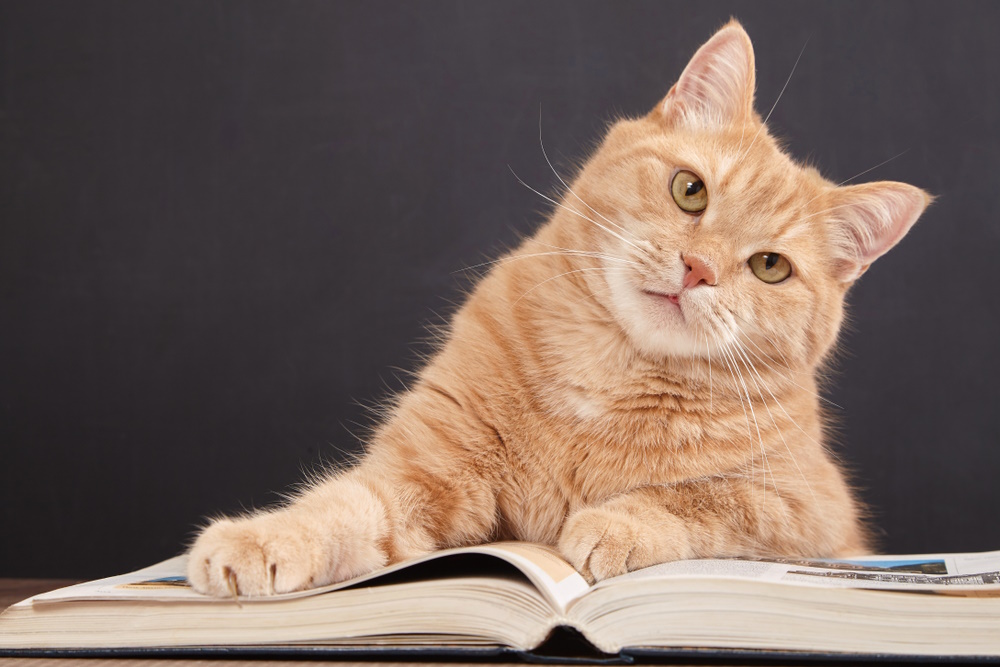
Conclusion
Cartoon cats often portray the charming and comical side of cats in a cute and endearing way. They’ve often been inspired by real cats, so it makes sense to name your own cat after a cartoon cat.
Take your time getting to know your cat before finalizing your decision on naming them. They just might remind you of one of your favorite cartoon cats. Your cat will love being named after an iconic character, and their new name will be like a badge of honor that they’ll wear with pride.
Featured Image Credit: Anton27, Shutterstock

